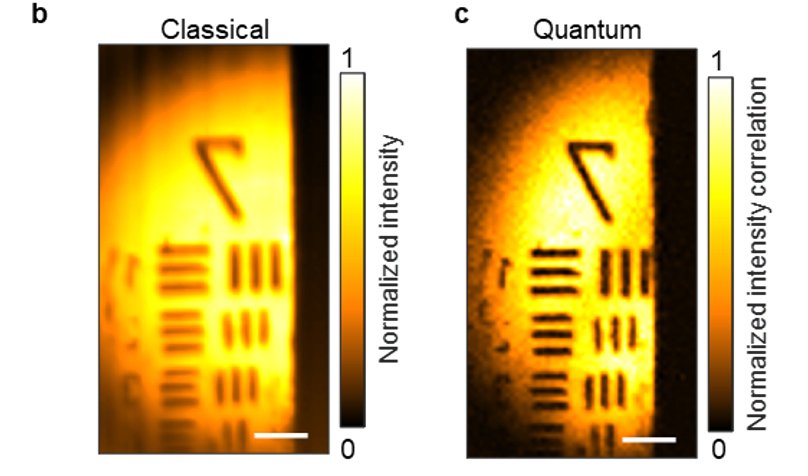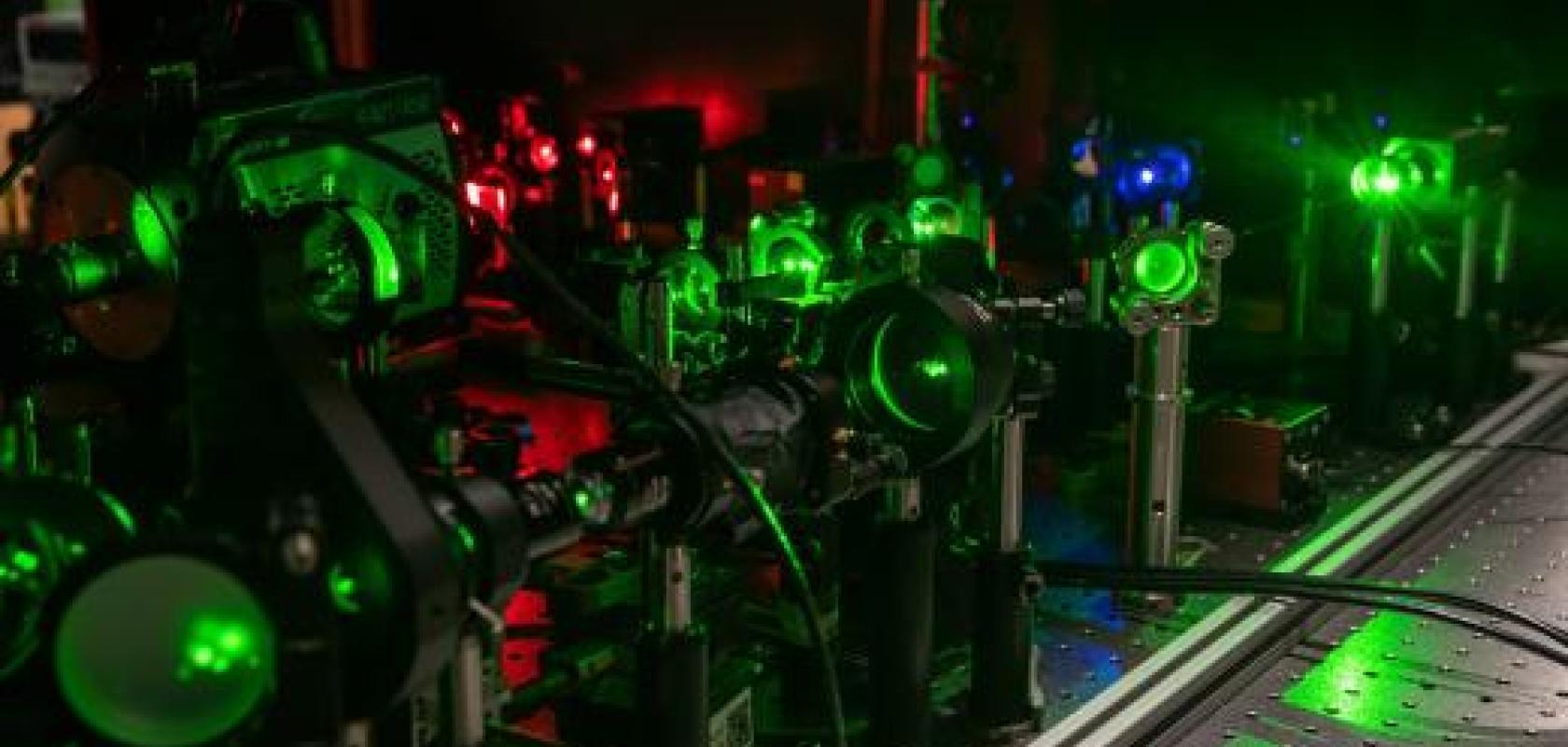Researchers at Caltech have discovered a way to double the resolution of microscopes using a technique called quantum microscopy by coincidence (QMC).
The technique, detailed in Nature Communications, relies on quantum entanglement – a phenomenon where particles become connected and the state of one affects the others, regardless of the distance between them.
While traditional microscopes can only detect features of an object that measure half the wavelength of the light used, the researchers were able to reduce this wavelength using quantum entanglement, doubling the resolution quality.
To demonstrate their technique, the team built an apparatus that shines a laser into a barium borate crystal, entangling photons into pairs known as biphotons. Although the crystal increases the chance of a successful entanglement, the odds are still one in a million. The biphotons are then split up using a series of mirrors, lenses, and prisms. One passes through the object being imaged (the signal photon) while the other (idle photon) does not, but both travel to a detector connected to a computer, which builds an image of the cell.
The researchers found that the biphoton remains entangled during this process and behaves as a single particle with half the original wavelength, even after following separate pathways and passing through the object. The team claims that because this technique shortens the wavelength of light, it could allow microscopes to reveal details in twice the resolution than before.

Quantum microscopy by coincidence shortens the wavelength of light, which could allow microscopes to reveal details in twice the resolution than before. (Image: Caltech)
Although light with a very short wavelength carries more energy, which can damage objects being imaged by a microscope (especially living things like cells), biphotons have both the lower energy of longer-wavelength photons and the shorter wavelength of higher-energy photons, which removes the risk.
"Cells don't like UV light," said Lihong Wang, leader of the project. "But if we can use 400nm light to image the cell and achieve the effect of 200nm light, which is UV, the cells will be happy, and we're getting the resolution of UV."
Biphoton imaging is nothing new, but Wang’s lab was the first to create a viable system using the concept, according to Caltech.
"We developed what we believe is a rigorous theory as well as a faster and more accurate entanglement-measurement method. We reached microscopic resolution and imaged cells," said Wang.
While there's no theoretical limit to the number of photons that can be entangled with each other, each additional photon increases the momentum of the resulting multiphoton while decreasing its wavelength, which lowers the microscope resolution. Wang hopes to entangle more photons in future but notes that the probability of success decreases with each additional photon.


